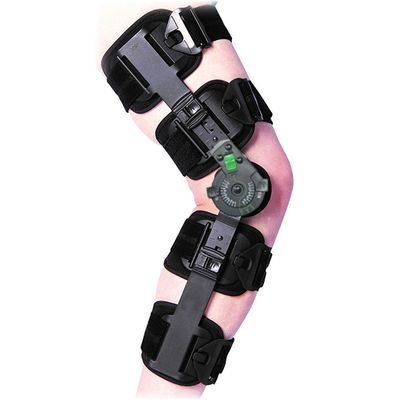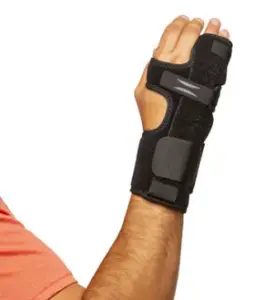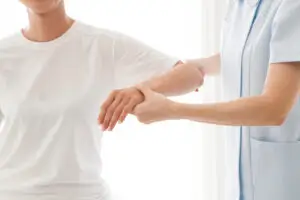Ankle-foot Orthotic
An ankle-foot orthotic (AFO) is a medical device used to support and stabilize the ankle and foot. It is typically prescribed for individuals with conditions affecting their ability to walk or maintain balance, such as stroke, cerebral palsy, multiple sclerosis, or foot drop. An AFO helps improve mobility, correct alignment, reduce pain, and prevent further injury by restricting certain movements while allowing for a natural walking pattern.
Types of Ankle-Foot Orthotics:
- Rigid AFOs: These provide maximum support and immobilize the ankle to prevent movement, often used in severe conditions like paralysis or significant muscle weakness.
- Dynamic AFOs: Made of flexible materials, these allow for some ankle movement while still providing support, suitable for individuals who need partial assistance.
- Articulated AFOs: Feature a hinge that allows controlled ankle motion, offering more natural movement while still limiting excessive or harmful ranges of motion.
- Carbon Fiber AFOs: Lightweight and durable, they provide energy return during walking and are ideal for those who need a balance of support and flexibility.
Benefits:
- Stability and Balance: Enhances stability during walking or standing.
- Improved Mobility: Assists with movement, making it easier to walk and engage in daily activities.
- Reduced Fatigue: Helps conserve energy by promoting efficient walking patterns.
- Pain Relief: Alleviates discomfort by providing support and proper alignment.
Ankle-foot orthotics can be custom-made or prefabricated, depending on the individual’s needs. A healthcare professional will typically assess the condition to recommend the best type of AFO.
Trend ROM Hinged Knee
The Trend ROM Hinged Knee is an adjustable range of motion orthosis that stabilizes the knee for patients suffering from mild to moderate strains, sprains, or ligament tears. Our Trend TX2 Moisture Wicking Neoprene provides support and compression while also being lightweight and breathable. Sized and universal options are available for a customized contoured fit.
-
PDAC Approved Codes
- L1832
- L1833
-
Key Features
- Provides post-injury protection, compression, and support
- Front closure wraparound
- Trend TX2 Moisture Wicking Neoprene provides a custom contoured fit
- Rubber tabs allow easy re-adjustment and application
- Easy to use controlled range of motion hinge
-
Indications
- Mild to moderate ACL, PCL, MCL, and LCL Sprains
- Meniscal or patellar instabilities
- Mild osteoarthritis
- Mild knee sprains and strains
-
Sizing Guide
- DC-032 (Up to 28”) UNIVERSAL
- DCT-002-1 (Up- 15”) XS
- DCT-002-2 (15- 18”) S
- DCT-002-3 (18- 21”) M
- DCT-002-4 (21- 24”) L
- DCT-002-5 (24- 26”) XL
- DCT-002-6 (26- 28”) 2XL
- DCT-002-7 (28- 30”) 3XL
Key Features of a Hinged Knee Orthosis:
- Adjustable Range of Motion (ROM):
- Allows controlled flexion and extension of the knee to aid in gradual recovery.
- Often has dial locks or stops to set specific degrees of motion restriction.
- Stabilization and Support:
- Reinforces the knee joint, preventing excessive lateral movement.
- Reduces strain on injured ligaments or post-operative structures.
- Hinged Mechanism:
- Mimics natural knee movement while preventing hyperextension.
- Can be single-axis or polycentric hinges for improved biomechanics.
- Comfortable and Adjustable Fit:
- Features adjustable straps, cushioned liners, and breathable materials.
- Designed for long-term wear without discomfort.
Common Uses of Hinged Knee Orthoses:
- Post-surgical recovery (e.g., ACL reconstruction, meniscus repair).
- Ligament injuries (ACL, MCL, PCL, LCL sprains or tears).
- Osteoarthritis relief (offloading knee pressure).
- Sports injury prevention (especially in high-impact sports).
- Patellar stabilization (for conditions like patellar subluxation).


Knuckle Orthosis: Purpose, Benefits, and Applications
Knuckle Orthosis Knuckle Orthosis: Purpose, Benefits, and Applications A Knuckle Orthosis is a specialized medical device designed to provide stability, support, and protection to the metacarpophalangeal (MCP) joints—the knuckles of the hand. These orthotic devices are commonly used in the… Continue Reading…

Wrist and Hand Braces: Support, Relief, and Rehabilitation for Hand and Wrist Conditions
Wrist and Hand Braces Introduction Wrist and hand braces are essential tools for individuals managing pain, recovering from injuries, or dealing with chronic conditions such as carpal tunnel syndrome, arthritis, or tendonitis. These braces provide stability, compression, and support to… Continue Reading…

Orthopedic Shoulder Braces: Support for Shoulder Injuries and Chronic Conditions
Orthopedic Shoulder Braces Introduction Orthopedic shoulder braces are designed to provide support and stabilization for individuals recovering from shoulder injuries, managing chronic shoulder pain, or undergoing post-surgical rehabilitation. These braces help alleviate discomfort, protect the shoulder joint, and prevent further… Continue Reading…


